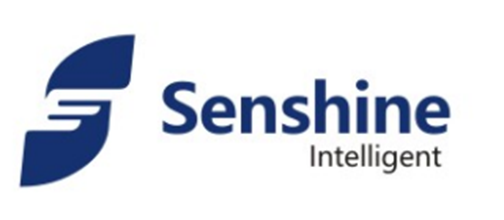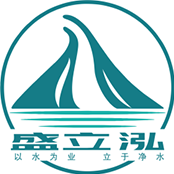Sheet metal process design
- Categories:Senshine News
- Author:
- Origin:
- Time of issue:2020-12-06
- Views:0
(Summary description)In meeting the requirements of product functions and appearance, the design of sheet metal should ensure simple stamping process, easy stamping die production, high quality of sheet metal stamping, and stable dimensions. For detailed sheet metal design guidelines, please refer to the "Part Structure Design Processability" and "Product Design Guidelines for Manufacturing and Assembly" published by the Machinery Industry Press.
Sheet metal process design
(Summary description)In meeting the requirements of product functions and appearance, the design of sheet metal should ensure simple stamping process, easy stamping die production, high quality of sheet metal stamping, and stable dimensions. For detailed sheet metal design guidelines, please refer to the "Part Structure Design Processability" and "Product Design Guidelines for Manufacturing and Assembly" published by the Machinery Industry Press.
- Categories:Senshine News
- Author:
- Origin:
- Time of issue:2020-12-06
- Views:0
In meeting the requirements of product functions and appearance, the design of sheet metal should ensure simple stamping process, easy stamping die production, high quality of sheet metal stamping, and stable dimensions. For detailed sheet metal design guidelines, please refer to the "Part Structure Design Processability" and "Product Design Guidelines for Manufacturing and Assembly" published by the Machinery Industry Press.
process
After the drawings are in hand, choose different blanking methods according to the different unfolded drawings and batches, including laser, CNC punching, shearing, molds, etc., and then make the corresponding unfolding according to the drawings. The CNC punch press is affected by the tool. For the processing of some special-shaped workpieces and irregular holes, large burrs will appear on the edges. The later deburring processing must be carried out, and at the same time, it will have a certain impact on the accuracy of the workpiece; laser processing has no tools. Restrictions, flat section, suitable for processing special-shaped workpieces, but it takes a long time to process small workpieces. Place the worktable next to the CNC and the laser, which is conducive to placing the sheet on the machine for processing and reducing the workload of lifting the board.
Some usable side materials are placed in designated places to provide materials for trial molds during bending. After the workpiece is blanked, the corners, burrs, and contacts should be trimmed (grinding treatment) as necessary. The tool contacts should be trimmed with a flat file. For workpieces with larger burrs, use a grinder to trim, and the small inner hole contacts should be trimmed. Use the corresponding small file to trim to ensure the beautiful appearance. At the same time, the trimming of the shape also ensures the positioning during bending, so that the position of the workpiece on the bending machine during bending is consistent, and the size of the same batch of products is consistent.
After the blanking is completed, it enters the next process, and different workpieces enter the corresponding process according to the processing requirements. There are bending, riveting, flanging and tapping, spot welding, convex hull, and segment difference. Sometimes the nut or stud should be pressed after one or two bends. Among them, the convex hull and segment difference of the mold should be considered. Process first to avoid interference in other processes after processing first, and the required processing cannot be completed. When there are hooks on the upper cover or lower shell, if they cannot be touch-welded after bending, they must be processed before bending.
When bending, you must first determine the tool and slot used for bending according to the size on the drawing and the thickness of the material. Avoiding deformation caused by collision between the product and the tool is the key to the selection of the upper mold (in the same product, it may be used Different types of upper mold), the selection of the lower mold is determined according to the thickness of the plate. The second is to determine the sequence of bending. The general rule of bending is first inside and then outside, first small and then big, first special and then common. The workpiece with the edge to be crushed first bend the workpiece to 30°-40°, and then use the leveling die to crush the workpiece.
When riveting, consider the height of the studs and choose the same and different molds, and then adjust the pressure of the press to ensure that the studs are flush with the surface of the workpiece, and avoid the studs from not being pressed firmly or pressing out beyond the surface of the workpiece, causing the workpiece scrapped.
Welding includes argon arc welding, spot welding, carbon dioxide shielded welding, manual arc welding, etc. Spot welding must first consider the position of the workpiece welding, and in mass production, consider making positioning fixtures to ensure that the spot welding position is accurate.
In order to weld firmly, make bumps on the workpiece to be welded. The bumps can be evenly contacted with the plate before energized welding, so as to ensure that the heating of each point is consistent. At the same time, the welding position can also be determined. Similarly, welding is required. Adjust the preload time, holding time, maintenance time, and rest time to ensure that the workpiece can be spot welded firmly. Weld scars will appear on the surface of the workpiece after spot welding, which should be treated with a flat grinder. Argon arc welding is mainly used when two large workpieces are to be connected together, or when the corners of a workpiece are treated to achieve a smooth surface of the workpiece. ,smooth. The heat generated during argon arc welding is easy to deform the workpiece. After welding, it is necessary to use a grinder and a flat grinder to process, especially the corners.
The workpiece must be surface treated after the bending, riveting and other processes are completed. The surface treatment of different plates is different. After cold plate processing, the surface is generally electroplated. After electroplating, it is not sprayed. Instead, phosphating is used. After chemical treatment, spray treatment is required. The surface of the electroplated board is cleaned, degreased, and then sprayed. The stainless steel plate (with mirror panel, fog panel, and wire drawing board) can be drawn before bending. No spraying is required. If spraying is needed, it needs to be roughed; aluminum plates are generally oxidized, and different colors can be selected according to different spraying colors. Oxidized background color, black and natural color oxidation are commonly used; aluminum plate needs to be sprayed with chromate oxidation treatment and then sprayed. Surface pretreatment can clean the surface, significantly improve the adhesion of the coating film, and can double the corrosion resistance of the coating film. The cleaning process first cleans the workpiece, first hangs the workpiece on the assembly line, first passes through the cleaning solution (alloy degreasing), then enters the clean water, then passes through the spray area, then passes through the drying area, and finally removes the workpiece from the assembly line Remove.
After the surface pretreatment, enter the spraying process. When the workpiece is required to be sprayed after assembly, the teeth or part of the conductive holes need to be protected. The teeth holes can be inserted into the soft glue stick or screwed into the screw. If the conductive protection is required, use high temperature tape to paste. Large quantities of positioning tooling are used for positioning protection, so that spraying will not spray into the inside of the workpiece, and the nut (flanging) hole that can be seen on the outer surface of the workpiece is protected with screws to avoid the nut (flanging) hole of the workpiece after spraying Need to go back.
Some large-volume workpieces also use tooling protection; when the workpiece is not equipped with spraying, the area that does not need to be sprayed is blocked with high-temperature tape and paper, and some exposed nut (stud) holes are protected by screws or high-temperature rubber. If the workpiece is sprayed on both sides, use the same method to protect the nut (stud) hole; small workpieces are sprayed with lead wires or paper clips and other items; some workpieces have high requirements on the surface, so dust scraping treatment should be performed before spraying; some workpieces are grounded The symbol is protected by a special heat-resistant sticker. When spraying, the workpiece is hung on the assembly line first, and the dust on the surface is blown off with the air pipe. Enter the spraying area for spraying. After spraying, follow the assembly line into the drying area, and finally remove the sprayed workpiece from the assembly line. There are two types of manual spraying and automatic spraying, so the tooling used is different.
After spraying, enter the assembly process. Before assembling, tear off the protective stickers used in the spraying process. Make sure that the internal threaded holes of the parts are not sprinkled with paint or powder. Wear gloves during the whole process to avoid dust on your hands. On the workpiece, some workpieces need to be blown clean with an air gun. After the assembly is completed, it enters the packaging process. After the workpiece is inspected, it is put into a special packaging bag for protection. Some workpieces without special packaging are packaged with bubble film, etc., before packaging, the bubble film is cut to the size of the workpiece. So as not to package and cut at the same time, affecting the processing speed; large quantities can be customized
Use cartons or bubble bags, rubber pads, pallets, wooden boxes, etc. After packaging, put it into the carton, and then paste the corresponding finished product or semi-finished product label on the carton.
In addition to the strict requirements in the production process, the quality of sheet metal parts requires a quality inspection independent of production. One is to strictly check the size according to the drawing, and the other is to strictly check the appearance quality. If the size does not match, repair or scrap it. It is allowed to check the color difference, corrosion resistance and adhesion after spraying. In this way, you can find errors in unfolding drawings, bad habits in the manufacturing process, and errors in the manufacturing process, such as programming errors in the number of punches, and mold errors.
Code
⒈ Scope of application
⒈1 This code applies to the cutting of material blanks with straight edges of various ferrous metals and other similar blanking.
⒈2 The basic thickness of the material to be cut is 0.5-6 mm, and the maximum width is 2500 mm.
⒉ Material
⒉1 The materials should meet the technical requirements.
⒉2 The material is cold-rolled steel plate, and serious scratches, scratches, impurities and rust spots on the surface are not allowed.
⒊ Equipment and process equipment and tools.
⒊1 Board, pliers, oil can, screwdriver, hand hammer.
⒊2 Vernier caliper, outside micrometer, steel plate ruler, steel tape measure, square ruler, drawing needle.
⒋ Process preparation
⒋1 Familiar with drawings and related process requirements, fully understand the geometric shape and size requirements of the processed parts.
⒋2 Pick up the materials according to the required material specifications in the drawings, and check whether the materials meet the requirements of the process.
⒋3 In order to reduce consumption and increase the utilization rate of materials, it is necessary to make reasonable calculations and adopt arranging methods.
⒋4 Place the qualified materials neatly beside the machine tool.
⒋5 Add oil to the oil holes of the shearing machine.
⒋6 Check whether the shear blades are sharp and fastened firmly, and adjust the blade gap according to the thickness of the sheet
Scan the QR code to read on your phone
相关新闻
Quick navigation
Contact us
ADD: No. 25, Hengluo Road, Henglin Town, Economic Development Zone, Changzhou City, Jiangsu Province
MOB: 15261189520 (Mr. Zhu)
TEL: 0519-88506962
FAX: 0519-88507962
Follow us

Online message
Copyright © 2021 Changzhou Senshine Intelligent Technology, Co., Ltd.. Powered by www.300.cn 苏ICP备15026250号-2 IPV6





